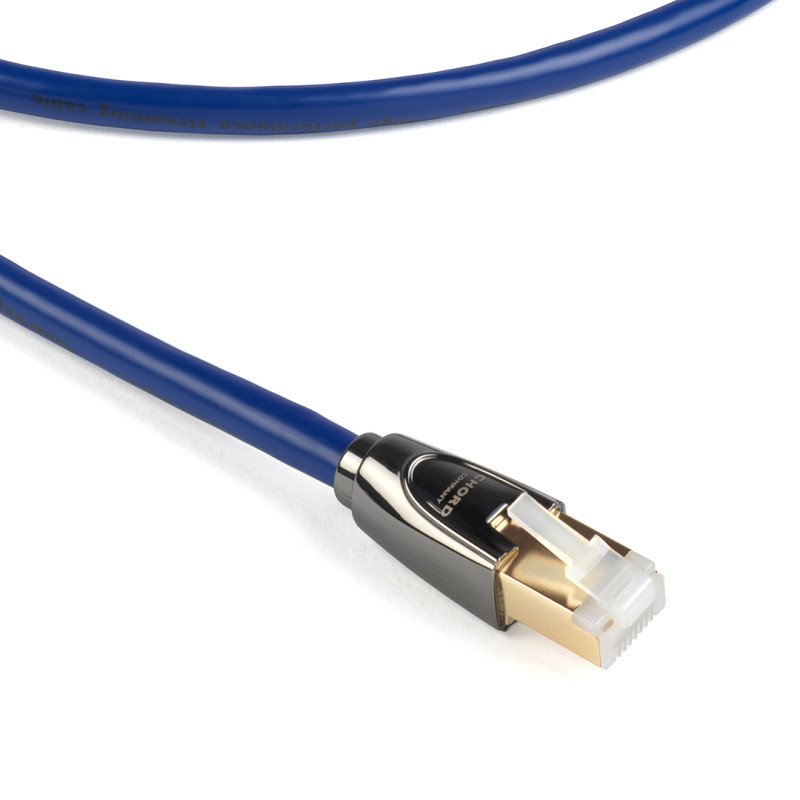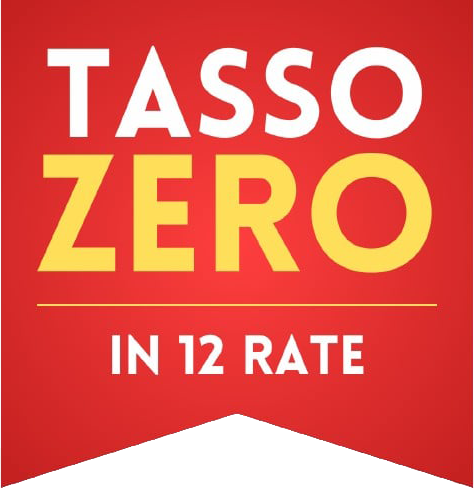



Cavo Ethernet per HiFi
Assistenza italiana
Consulenza e preventivi
Spedizione monitorata
Chord Clearway Stream è il cavo audio digitale con terminazioni Ethernet per DAC, NAS, Streamer. Porta la qualità Chord al tuo sistema HiFi, anche nel dominio digitale.
Descrizione
Cavo Ethernet Chord Clearway Stream per sistemi audio
Clearway Stream, assieme alla soluzione terminata con USB, è la proposta di The Chord Company in ambito streaming. Chord propone qui degli ottimi cavi Ethernet per la musica liquida, Streamer e DAC HiFi. L’attenzione al dettaglio che offre la Serie Clearway è notevole. Nonostante un prezzo molto vantaggioso è proprio a partire dal livello di qualità offerto dalle Serie Clearway che, sostiene Chord, si dovrebbe notare una immediata differenza di qualità nel momento stesso in cui vengono collegati i cavi di al sistema HiFi.
Il cavo Clearway Stream – tecnicamente un cavo Ethernet CAT7 – è stato progettato per eliminare il problema dell’introduzione, da parte del cavo, del rumore esterno ad alta frequenza. Ogni cavo, lungo la sua lunghezza, funge da antenna e riceve e trasmette al sistema audio tutti i segnali e disturbi elettromagnetici captati in area. Il rumore può penetrare nella massa del segnale ed influenzare le prestazioni dei circuiti sia digitali che analogici. Sebbene le informazioni digitali siano molto robuste, questo rumore indesiderato può compromettere le prestazioni finali, soprattutto in sistemi in tempo reale come quelli musicale ad alta risoluzione. Tutto questo rumore si traduce naturalmente in un segnale “ostile” e aggiuntivo al segnale musicale, segnale che interferisce con il godimento dell’audio e del video digitale in streaming. Per evitare questo problema che affligge il godimento di sorgenti musicali digitali ad alta risoluzione ciascuna delle quattro coppie di conduttori – in rame privo di ossigeno OFC e pensati per dati ad alta velocità – è stata schermata individualmente. In aggiunta a questo Chord ha montato in Clearway Stream uno schermo complessivo aggiuntivo sotto la giacca protettiva esterna, ottimizzato per proteggere ulteriormente dal rumore ad alta frequenza.
Cavi Ethernet Cat5e e Cat6, qualità del suono
La maggior parte delle applicazioni audio over Ethernet, quindi anche tutto lo Streaming, consiglia di utilizzare Gigabit Ethernet (1000BASE-T, GbE o 1 GigE). La velocità di trasmissione di 1 Gb/s di Gigabit Ethernet richiede che una determinata infrastruttura di rete la supporti, incluso l’hardware di commutazione compatibile con Gigabit e un cavo Ethernet di classificazione o categoria sufficiente per supportare velocità Gigabit.
Le reti Ethernet con filo di rame utilizzano generalmente un cavo a doppino intrecciato. Il cablaggio a doppino intrecciato è un tipo di cablaggio in cui due conduttori di un unico circuito sono intrecciati insieme allo scopo di annullare l’interferenza elettromagnetica (EMI) da fonti esterne e ridurre la diafonia tra coppie vicine.
Le due categorie di cavi Ethernet più comuni che potresti incontrare sono la Categoria 5e e la Categoria 6, che supportano entrambe velocità Gigabit a lunghezze fino a 100 metri, come specificato dallo standard TIA/EIA-568. Le specifiche più elevate di Cat6 sono in realtà progettate per supportare velocità fino a 10 Gb/s (10GBASE-T o 10 Gigabit Ethernet), ma è retrocompatibile con Cat5e (oltre agli standard Cat5 e Cat3). Le differenze principali tra Cat5e e Cat6 che spiegano le loro diverse prestazioni sono il calibro del filo dei conduttori e il numero di torsioni per pollice in ciascuna coppia di fili, con Cat6 che utilizza un filo di calibro più pesante e una specifica di torsioni per pollice più elevate, fornendo una minore diafonia e un rapporto segnale/rumore più elevato.
La scelta di quale cavo utilizzare in ambito HiFi dipenderà da una serie di fattori come il costo ammissibile, la lunghezza da coprire, il livello di dispositivi collegati. Cat5e è solitamente un po’ più economico, può essere leggermente più facile da lavorare a causa delle differenze di costruzione e supporta ancora pienamente le velocità Gigabit (purché sia veramente Cat5e e non la vecchia specifica Cat5), ma Cat6 è generalmente una scelta migliore e vale la pena il piccolo sovrapprezzo, soprattutto se si tiene conto di un utilizzo futuro, data la capacità di velocità superiori al Gigabit.
La considerazione più importante è procurarsi il cavo da un fornitore rispettabile per assicurarsi di ottenere un prodotto di alta qualità che soddisfi le specifiche industriali e ingegneristiche dichiarate dall’etichetta di categoria. Vanno evitati il più possibile cavi eccessivamente economici ed eventuali etichette CCA (Copper Clad Aluminium), poiché non soddisfa le specifiche TIA/EIA per il cablaggio Cat5e e Cat6.
Cavi Ethernet schermati o non schermati
Un cavo Ethernet schermato è un cavo Ethernet speciale costruito con una schermatura elettrica aggiuntiva lungo la lunghezza del cavo (utilizzando un filo intrecciato, un involucro di alluminio o una combinazione di entrambi) nonché spine appositamente costruite che collegano elettricamente e mettono a terra correttamente la schermatura del cavo al dispositivo collegato a ciascuna estremità (che deve avere anche speciali jack schermati).
Esistono alcuni casi d’uso specifici che potrebbero richiedere un cavo Ethernet schermato per evitare che le interferenze elettromagnetiche (EMI) o le interferenze a radiofrequenza (RFI) influiscano sulle prestazioni del cavo. Ciò è generalmente richiesto in ambito HiFi ad Audio in genere.
Va notato che in effetti, se il cavo schermato non viene implementato correttamente può effettivamente introdurre problemi e peggiorare le cose rispetto all’utilizzo di un cavo non schermato.
Il cavo schermato, o a maggior ragione con doppia schermatura come questo Clearway Stream, è naturalmente più costoso, più pesante, più difficile da realizzare e terminare. Questo ne giustifica il diverso costo in relazione ai classici cavi Ethernet non schermati reperibili in negozi di informatica.
SPECIFICHE TECNICHE Chord Clearway Stream
Ultimo connettore sottile per la massima compatibilità
Conduttori in rame senza ossigeno ad alta velocità
Doppini intrecciati schermati singolarmente più schermatura complessiva
Isolamento in polietilene a bassa densità a bassa perdita
24ct. contatti di segnale dorati
Guaina connettore in zinco
Sistema antistrappo senza compressione
Disponibile nelle lunghezze 0,75 m, 1,5 m, 3 m, 5 m, 10 m, 15 m e 20 m